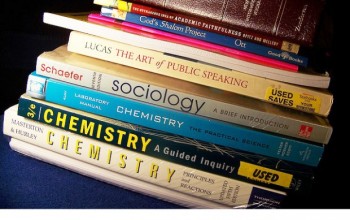 Choosing colleges and drafting a path to future employment or graduate school with your son or daughter need not be a mysterious process. In truth, there is a formula for evaluating your child, as well as prospective colleges, study paths, and career options. Yet, the formula operates in a counter-intuitive way. Do not waste your time with the wrong data at the wrong time. Instead, follow our time-tested recipe and find the right colleges and study plan for your child.
Choosing colleges and drafting a path to future employment or graduate school with your son or daughter need not be a mysterious process. In truth, there is a formula for evaluating your child, as well as prospective colleges, study paths, and career options. Yet, the formula operates in a counter-intuitive way. Do not waste your time with the wrong data at the wrong time. Instead, follow our time-tested recipe and find the right colleges and study plan for your child.
Three major components are worthy of clarification. First define the student’s needs and abilities from an academic, social, and cultural perspective. Next, review the curriculum of each college. Quantify both the 4-year major(s) plan(s) for options A, B, and C and the general education requirements. Finally, your task is to understand the college and its offerings. What does the college do well? What are the weak spots or potential drawbacks if your child attends this college? Below, we present our formula for planning for the future and choosing colleges. Follow our script in the exact order given. If you change the order of steps, you change the outcome and may lead your child astray. Regarding two associated and important concerns: how to judge the likelihood of acceptance at any particular school and how to create a balanced list of colleges to apply to; we will cover those topics in an upcoming report.
STEP ONE
• Academic strengths and weaknesses: analytical, reading comprehension, writing, computation, vocabulary, abstract reasoning, creative or artistic abilities
• Fit with major academic disciplines: STEM (science, technology, engineering, and math) majors, social sciences (psychology, economics, sociology, etc), arts and humanities (English, visual and performing arts, history, philosophy, etc.), or pre-professional (graphic design, film and TV, nursing, agriculture, etc.)
• Learning style: aural, visual-spatial, hands-on?
• Primary learning concerns: ability to quickly synthesize large amounts of material; working memory; need for discussion; need for clarification from teachers; ability to be a self-directed learner
• Caliber of executive function skills: planning and reviewing; ability to break down projects into small steps; organization of materials, assignments, papers; turning in assignments on-time
• Learning or attention disorders: need for accommodations, learning support programs, tutors, academic coaching, extra assistance from teachers
• Resolve: ability to self-advocate, emotional stability, self-care abilities
• High school performance: achieved at abilities, underachiever, overachiever?
• Study and work habits: most majors require 10-15 hours of study each week outside of class for B grades; 20-30 hours or more for mathematics, engineering, computer science. Can student meet that standard?
• Sociability: makes friends easy, shy; entertains self or lone wolf; comfort with diverse groups, unfamiliar peers?
• Partying: student comfort with presence of alcohol, drugs; ability to handle temptations; preference for more studious peers and cultures
• Politics: fiery and activist, apolitical, conservative, liberal; student tolerance for political correctness
• Religion: need for religious services; tolerance for anti-religious attitudes; willingness to attend religious college with theology requirement
STEP TWO
What is your child’s plan for study?
• Student curiosities: subjects, interests, majors
• Graduate school?
• First, second, and third choice major
• Research: visit school website and academic departments. Review four-year
major plan for first, second, and third choice major
• Coursework: four-year plan and course descriptions; do courses look
interesting to student? Availability of courses in student’s specific curiosity
(i.e. if daughter is prospective major in economics, are courses available in
particular interest in international trade and commerce?)
• If course descriptions are sparse on academic department website, seek out
course catalog
• Challenge of Coursework: Intellectual challenge; level of workload. Ability
of child to acquire 3.3 GPA? Refer back to step one, “who is your child?” and ability to handle distractions; high school work habits.
• General education requirements: at public research universities, can take up
50% of student’s total course-load over four years. How many courses? General
ed. courses typically boring, though not difficult. Student performance is poor
because of dull material.
• First and second year coursework: Most important, as these are years of transition and vulnerability
• Professional skill development: required internships, practicums? Senior project or thesis?
• Study abroad: specific options for student’s major, quality of study abroad
coursework. Culture and language only or serious academic work?
STEP THREE
What does this college offer my child?
• Academic Quality: foremost concern! Quality of education in specific major and generally across university. Reputation, U.S. News Rankings are of no use. Must do hands-on research
• How to determine quality: review syllabi, assess typical mode of instruction and examination; typical class size for introductory courses; number of essays required per course-load
• Assigned textbooks: visit bookstore or look online. Large format synthesized texts with bolded words and summaries? Original academic works?
• Talk with current students: With lower division students: size, level of challenge, and quantity of workload in introductory classes; professor availability for assistance. Upper division students: research opportunities, internships, mentoring, study abroad, and faculty guidance with regard to careers and graduate school applications.
• Extra-curricular experiences: participative or competitive? Can any student join theater ensemble, radio station, newspaper or are they restricted to majors only? Who can join investment club, other business and career groups?
• Learning support staff for attention and learning disorders: availability of one-to-one advising, tutoring, academic coaching for study skill and time-management. Learning specialists on staff? Walk-in appointments or need for big lead times? Formal and comprehensive learning support program? Professors willingness to accommodate special needs, extra time, etc.?
• Career services: gauge quality and availability of staff. One to one help with internships, resumes, interviews, alumni connections? Investigate top employers and industries for recent grads. How frequent are graduates hired by alumni?
• Child’s comfort on campus: high, medium, low
• Observe campus social habits: lots of activity on weekends or emptying out? Socializing in groups, alone, friendly and inviting? Stress level: high, medium, low
• Housing: number on campus, in surrounding blocks, and far away from campus. How many years of on-campus living required?
• Neighboring shops & services: coffee houses, restaurants, bars, shops within
walking distance
• Greek life: percentage of students participating, volume of partying
With thorough investigation, a robust plan for the future can be created. If you have difficulty answering the above prompts and questions, then your family has more work to do. Safe passage to success in college and career is not guaranteed; please do not misjudge the current conditions.

